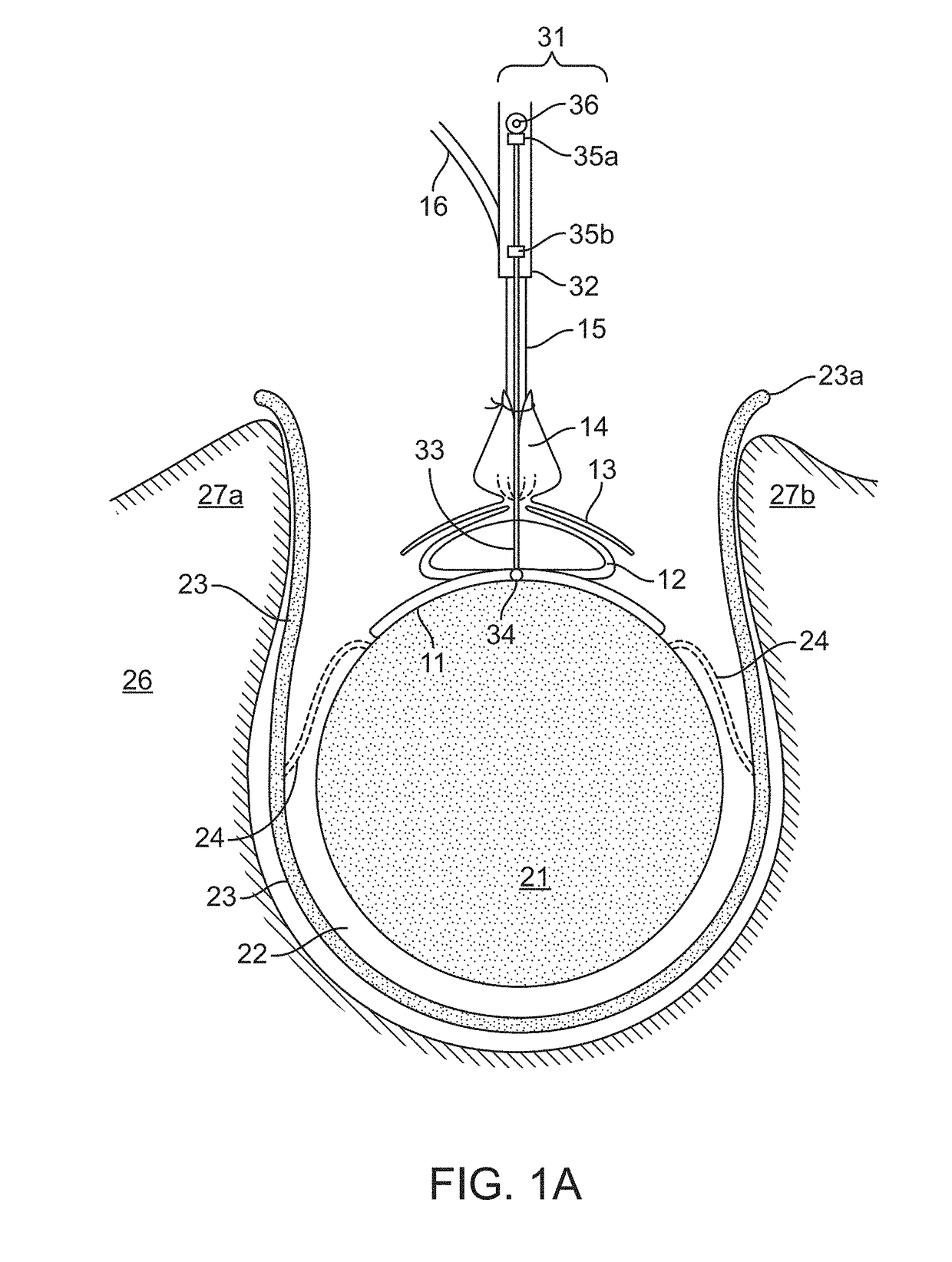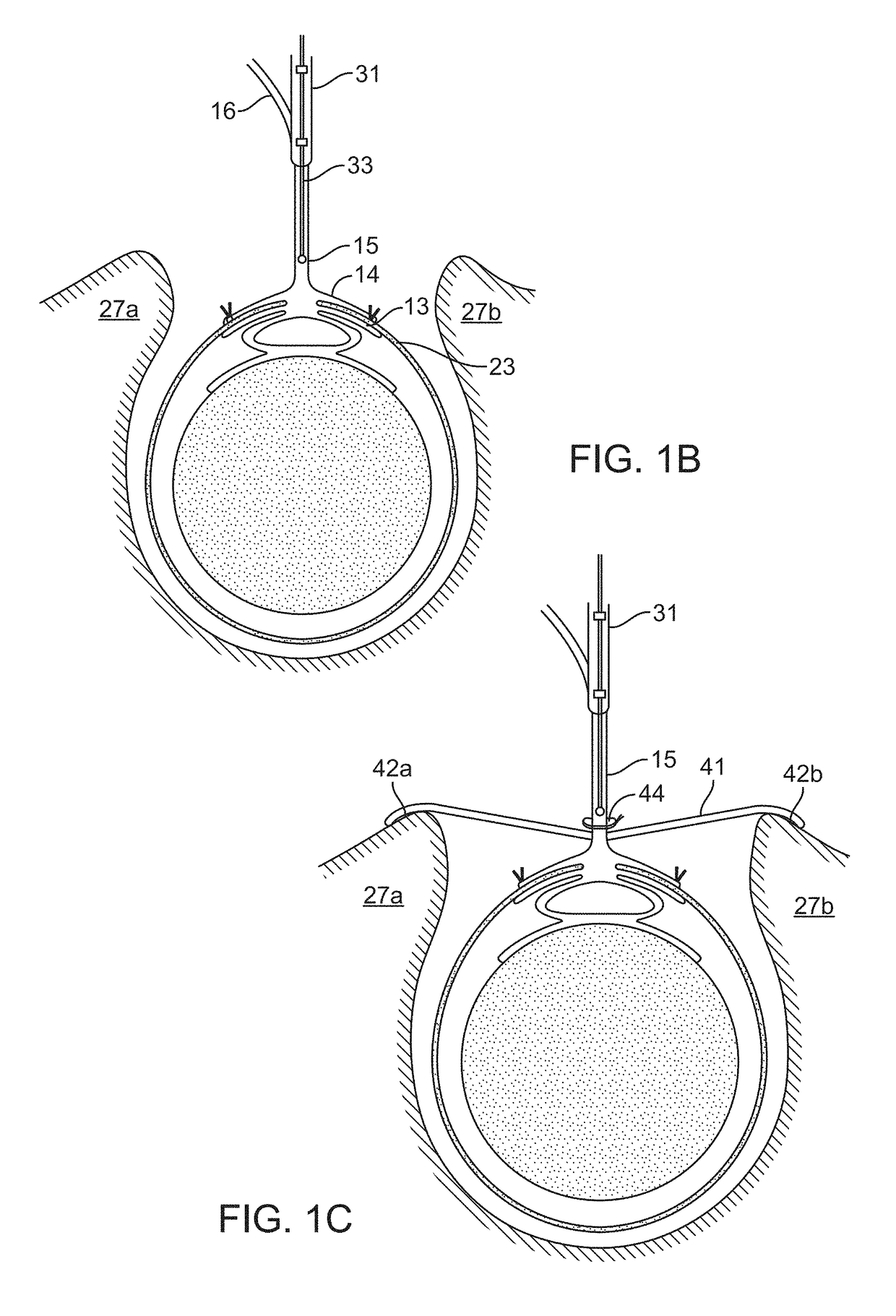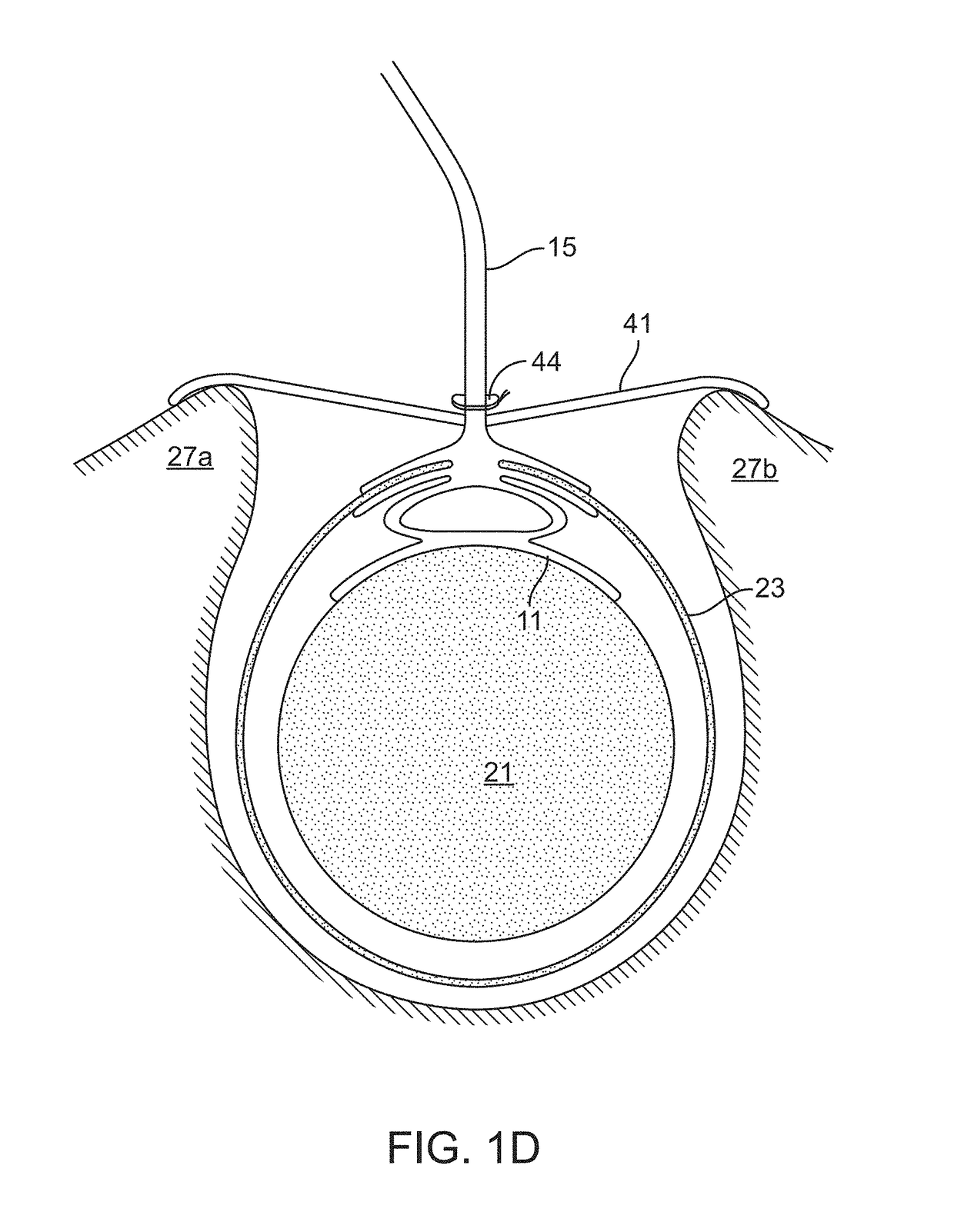High frequency stimulation of the spinal cord from inside the dura
a spinal cord and high-frequency stimulation technology, applied in the field of medical devices and pain management, can solve the problems of affecting the basic activities of patients, affecting the quality of life of patients,
- Summary
- Abstract
- Description
- Claims
- Application Information
AI Technical Summary
Benefits of technology
Problems solved by technology
Method used
Image
Examples
example 1
ion of the Electrode Array Structure Using Thoracic Spine Imaging Data
[0122]An important dimensional parameter for a spinal cord stimulator array is the arc length that it subtends over the dorsal surface of the spinal cord. There are conflicting design goals. One is to make that span as long as possible, in order to maximize the number of electrodes and hence the stimulus-pattern coverage of the underlying dorsal columns. However, another is to ensure that the membrane does not make mechanical contact with the dorsal rootlets.
[0123]In this study, structural dimensions of the spinal cord at the level of the 4th through 10th thoracic vertebrae were investigated (the region in which the array would be placed when treating back and leg pain). The arc length “S” between dorsal-root entry zones (DREZ) was calculated in two ways from magnetic resonance (MR) images of the thoracic spine for 50 patients seen at the University of Iowa Hospitals and Clinics.
[0124]One axial and sagittal image ...
example 2
Measurement of Spinal Cord Motion During Flexion of the Spine: Implications for Intradural Spinal Cord Stimulator Systems
[0133]For purposes of this study, a 1.5 T Magnetom Espree® magnet (Siemens, Erlangen, Germany) was used. Informed consent was obtained from healthy volunteers ranging in age from 23 to 58. Each volunteer was first imaged in a supine neutral position and then imaged in a maximal attainable flexed position.
[0134]To obtain the maximal flexion of the spine, patients were given three basic positioning instructions. The first was to rotate their pelvis backwards towards the gantry as far as possible to remove the lumbar lordosis and straighten the lumbar spine. The second was to curl their upper back, neck and head forward so that their shoulders were as close to their knees as possible. The third instruction was then to tuck their chin down as close to their chest as possible. While attaining this flexed position in the bore, a variety of foam wedges and pillows were u...
PUM
 Login to View More
Login to View More Abstract
Description
Claims
Application Information
 Login to View More
Login to View More - R&D
- Intellectual Property
- Life Sciences
- Materials
- Tech Scout
- Unparalleled Data Quality
- Higher Quality Content
- 60% Fewer Hallucinations
Browse by: Latest US Patents, China's latest patents, Technical Efficacy Thesaurus, Application Domain, Technology Topic, Popular Technical Reports.
© 2025 PatSnap. All rights reserved.Legal|Privacy policy|Modern Slavery Act Transparency Statement|Sitemap|About US| Contact US: help@patsnap.com



